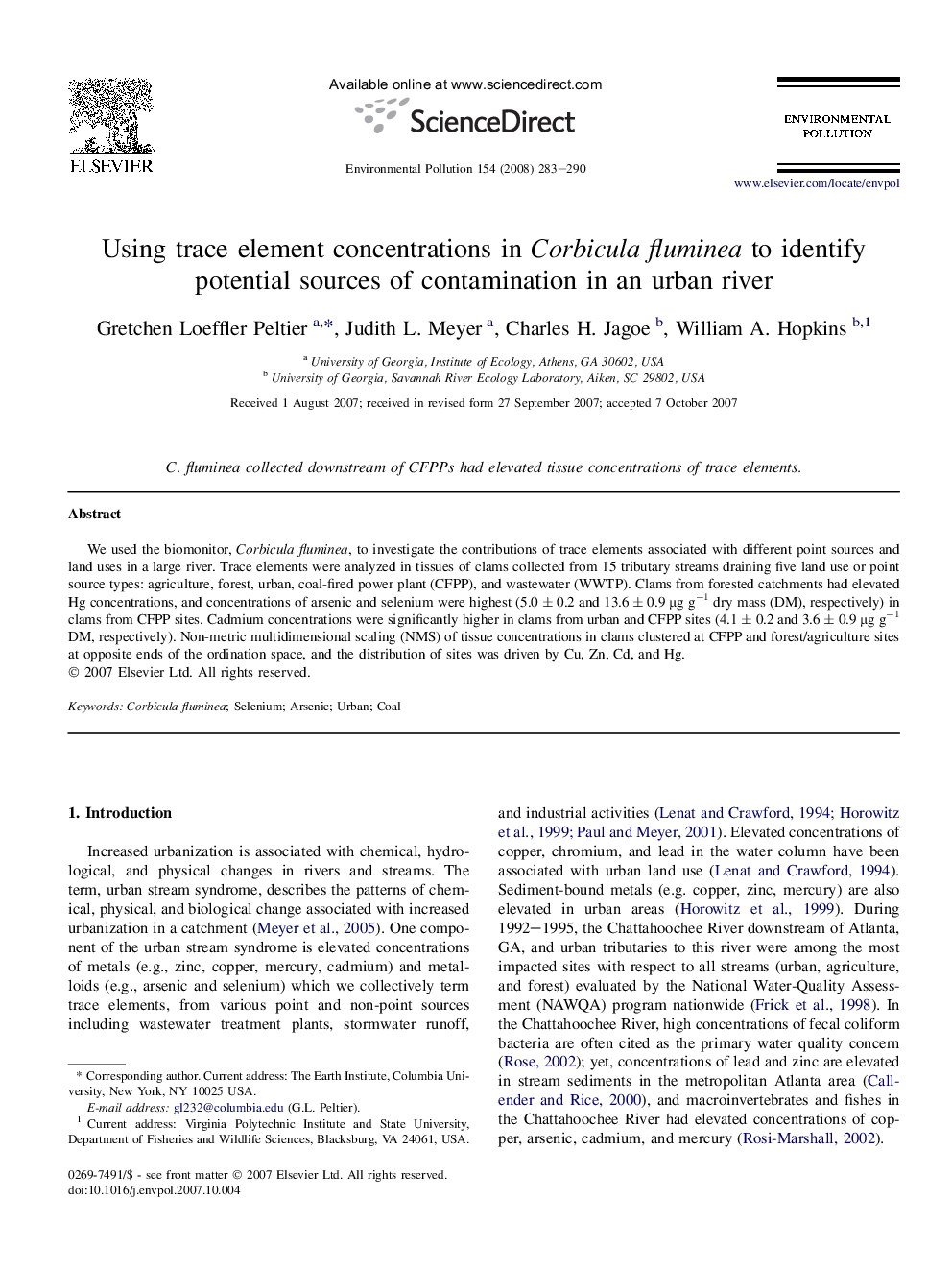| Article ID | Journal | Published Year | Pages | File Type |
|---|---|---|---|---|
| 4426658 | Environmental Pollution | 2008 | 8 Pages |
We used the biomonitor, Corbicula fluminea, to investigate the contributions of trace elements associated with different point sources and land uses in a large river. Trace elements were analyzed in tissues of clams collected from 15 tributary streams draining five land use or point source types: agriculture, forest, urban, coal-fired power plant (CFPP), and wastewater (WWTP). Clams from forested catchments had elevated Hg concentrations, and concentrations of arsenic and selenium were highest (5.0 ± 0.2 and 13.6 ± 0.9 μg g−1 dry mass (DM), respectively) in clams from CFPP sites. Cadmium concentrations were significantly higher in clams from urban and CFPP sites (4.1 ± 0.2 and 3.6 ± 0.9 μg g−1 DM, respectively). Non-metric multidimensional scaling (NMS) of tissue concentrations in clams clustered at CFPP and forest/agriculture sites at opposite ends of the ordination space, and the distribution of sites was driven by Cu, Zn, Cd, and Hg.
